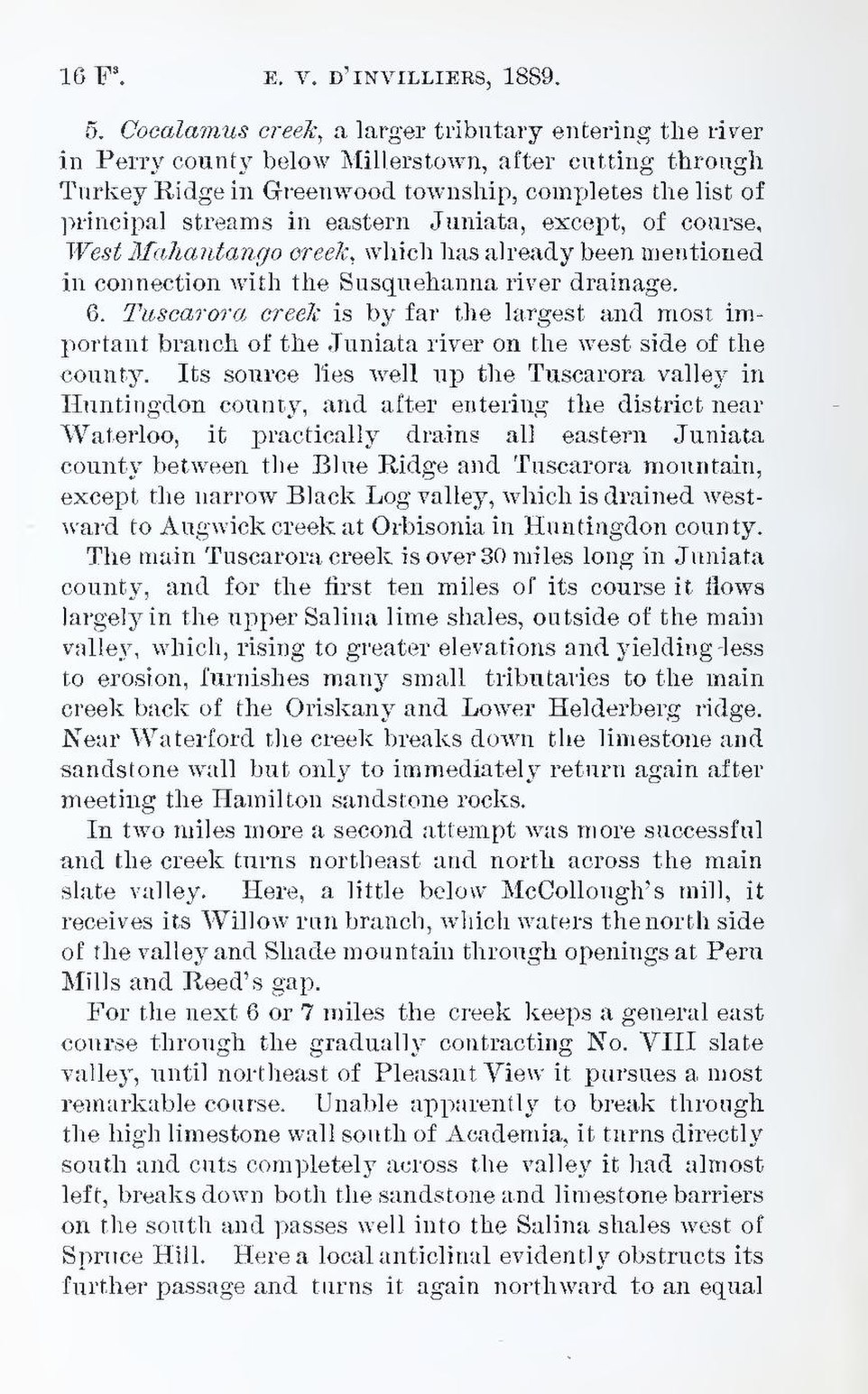5. Cocalamus creek, a larger tributary entering the river in Perry county below Millerstown, after cutting through Turkey Ridge in Greenwood township, completes the list of principal streams in eastern Juniata, except, of course, West Mahantango creek, which has already been mentioned in connection with the Susquehanna river drainage.
6. Tuscarora creek is by far the largest and most important branch of the Juniata river on the west side of the county. Its source lies well up the Tuscarora valley in Huntingdon county, and after entering the district near Waterloo, it practically drains all eastern Juniata county between the Blue Ridge and Tuscarora mountain, except the narrow Black Log valley, which is drained westward to Augwick creek at Orbisonia in Huntingdon county.
The main Tuscarora creek is over 30 miles long in Juniata county, and for the first ten miles of its course it flows largely in the upper Salina lime shales, outside of the main valley, which, rising to greater elevations and yielding less to erosion, furnishes many small tributaries to the main creek back of the Oriskany and Lower Helderberg ridge. Near Waterford the creek breaks down the limestone and sandstone wall but only to immediately return again after meeting the Hamilton sandstone rocks.
In two miles more a second attempt was more successful and the creek turns northeast and north across the main slate valley. Here, a little below McCollough’s mill, it receives its Willow run branch, which waters the north side of the valley and Shade mountain through openings at Peru Mills and Reed’s gap.
For the next 6 or 7 miles the creek keeps a general east course through the gradually contracting No. VIII slate valley, until northeast of Pleasant View it purses a most remarkable course. Unable apparently to break through the high limestone wall south of Academia, it turns directly south and cuts completely across the valley it had almost left, breaks down both the sandstone and limestone barriers on the south and passes well into the Salina shales west of Spruce Hill. Here a local anticlinal evidently obstructs its further passage and turns it again northward to an equal
